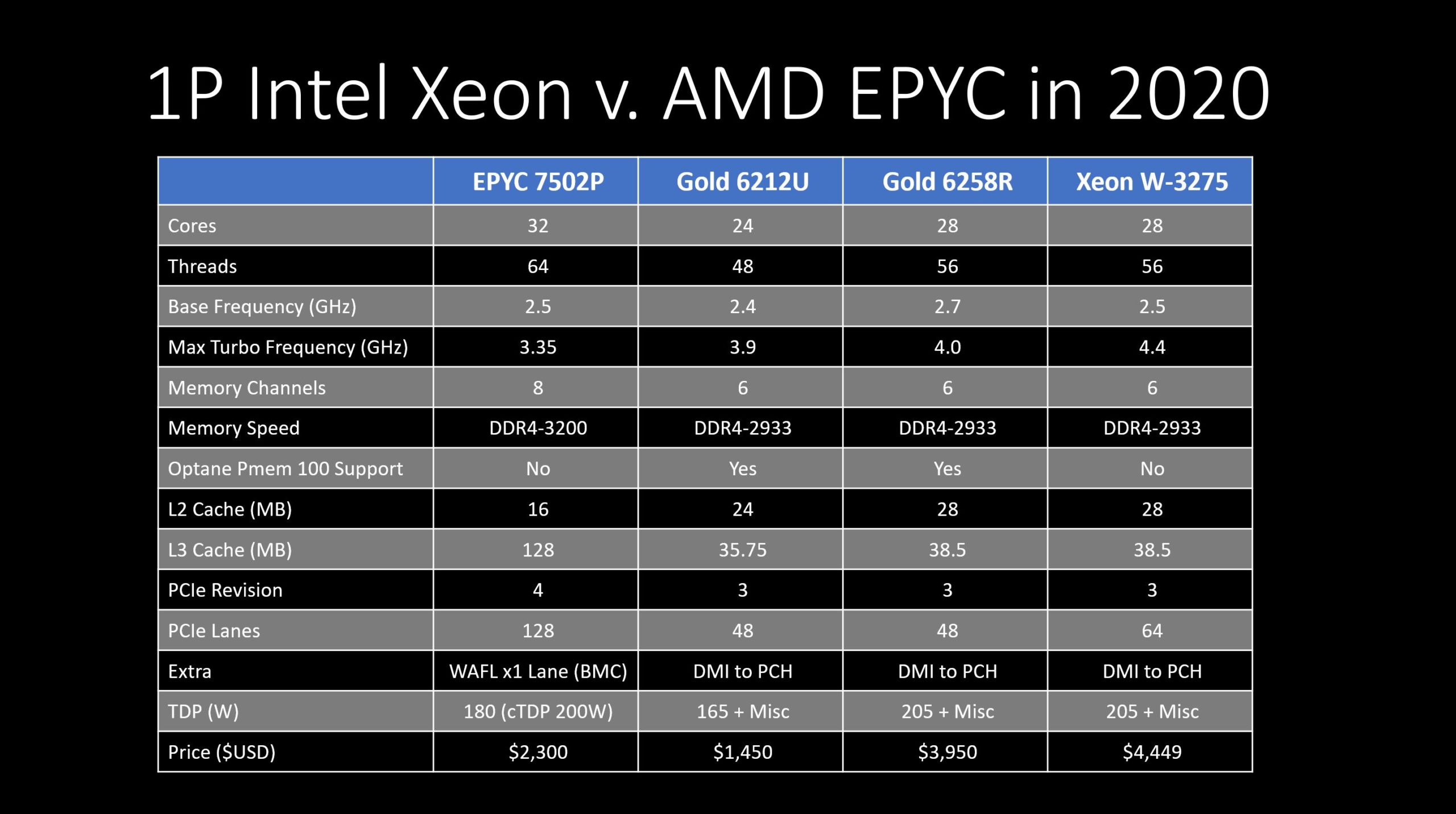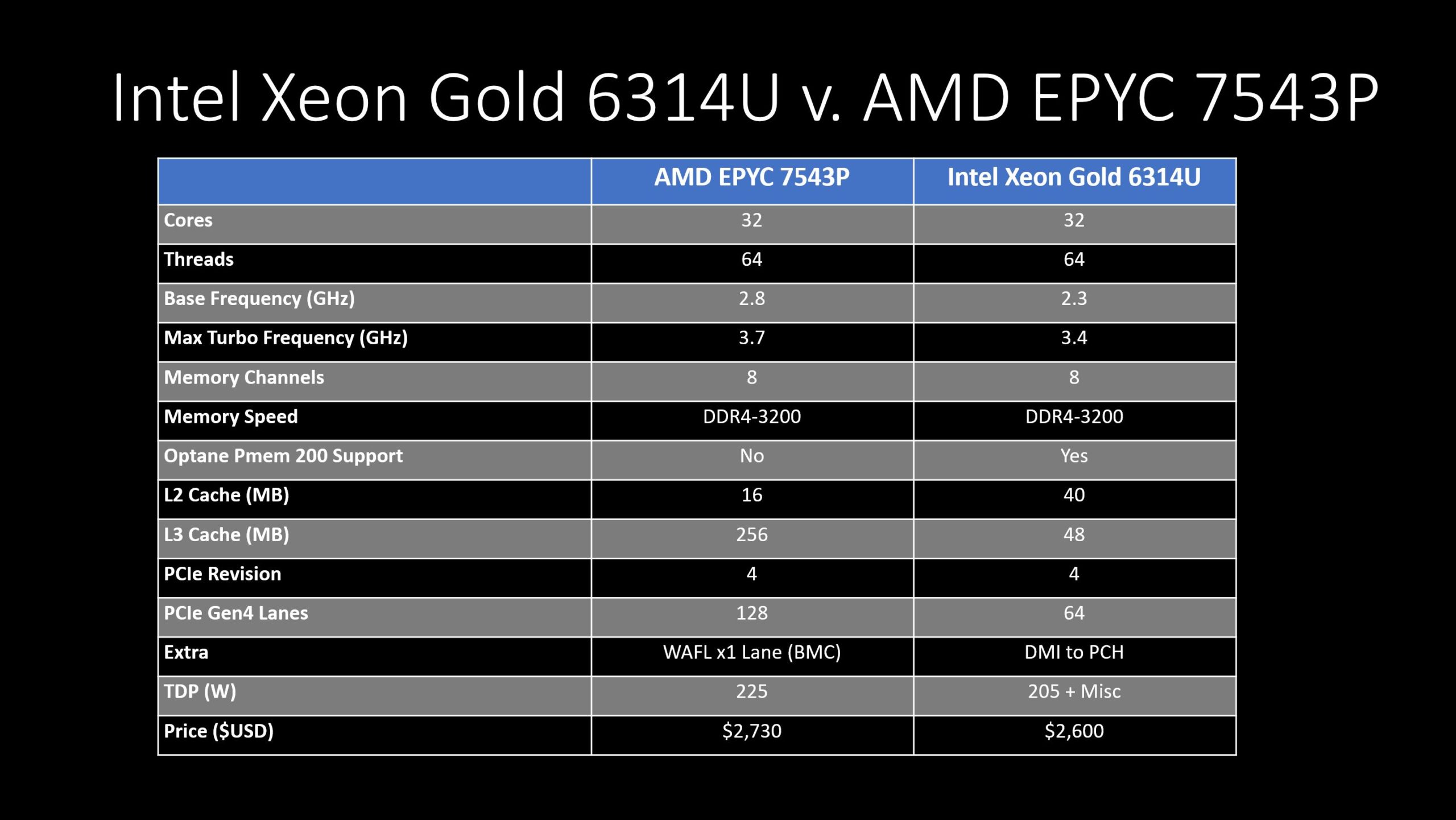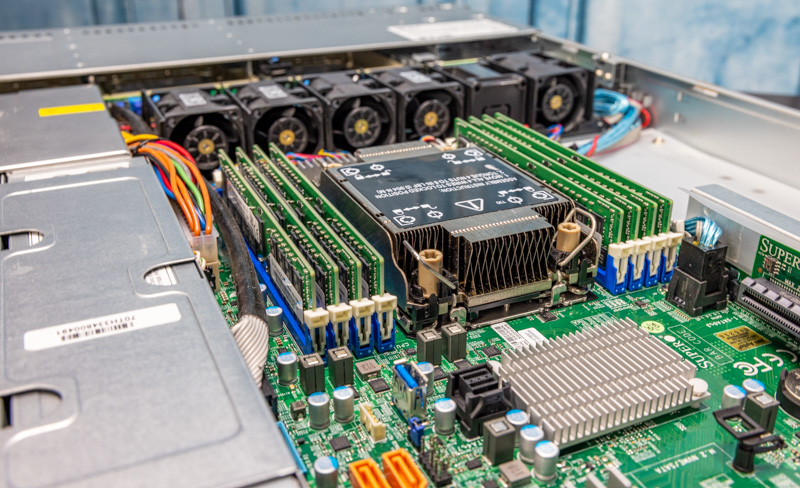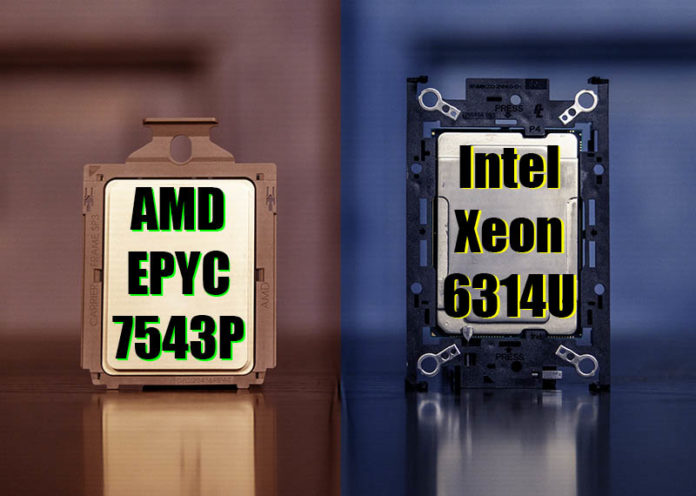Today, we wanted to go into a bit on the Intel Xeon Gold 6314U. Specifically, this is the 3rd Generation Intel Xeon Scalable “Ice Lake” part that the U in the name tells us that it is a Uni-processor offering. With this chip, Intel has a 32-core single-socket part that is a huge step forward from the previous generation. Indeed, this new chip has reset expectations for the company’s competition with AMD EPYC P-series parts.
With this review, we are going to do something a bit different. Since this is designed to be a competitive product with the AMD EPYC 7543P, we decided to do a bit more of a deep dive on the comparative differentiation between the Intel Ice Lake and AMD EPYC 7003 Milan offerings for this specific single-socket 32-core CPU niche.
Video Version
As with many of our recent pieces, we have the video version for this review that you can find here:
We always suggest opening the video in a YouTube tab if you want to learn more.
Intel Xeon Gold 6314U Background
First some background on the Intel Xeon Gold 6314U which is one of three single-socket-only CPUs from Intel in the current “Ice Lake” generation. Intel has been following AMD’s lead here and offers a few single-socket SKUs at a discount to its mainstream dual-socket parts.
Key stats for the Intel Xeon Gold 6314U: 32 cores / 64 threads with a 2.3GHz base clock and 3.4GHz turbo boost. There is 48MB of onboard L3 cache. The CPU features a 205W TDP. These are $2600 list price parts.
Here is the lscpu output for the Intel Xeon Gold 6314U:

If you want to read more about the Ice Lake generation, see our piece: Intel Xeon Ice Lake Edition Marks the Start and End of an Era. Since we are doing this in a slightly different format, we wanted to next go into what exactly Intel offers in comparison to AMD for this 32-core single-socket market.
First, we are going to go into a bit of history. Here is what the offerings looked like before the 2021 launches of AMD EPYC 7003 “Milan” and Intel Xeon “Ice Lake” generations:

Patrick goes into this in-depth in the video above, but the overall message here is that Intel did not really have a competitive answer at 32 cores until Ice Lake arrived. The previous generation had lower core counts, PCIe Gen3, fewer and slower memory channels, and often higher pricing. This picture largely changes with the 2021 generations of CPUs.
Here is what the direct comparison looks like between the AMD EPYC 7543P and the Intel Xeon Gold 6314U looking at a similar set of attributes:

Here the big comparisons show that the core/ thread counts, memory channels, and speeds are the same. AMD has higher clock speeds and more L3 cache while Intel has more L2 cache and support for Optane PMem 200. If you want to learn more about Optane PMem, check out the Glorious Complexity of Intel Optane DIMMs and Micron Exiting 3D XPoint. Here is that video as well.
Intel moved to PCIe Gen4 and now has 64 lanes instead of 48 lanes available. This combined with the PCH and pricing more aligned to the AMD EPYC 7543 means that we found the Supermicro SYS-510P-WTR 1U 1P Intel Xeon server to be quite capable, and significantly more so than previous generation single-socket Xeon platforms.

Again, this is an area that Patrick explains in detail in the video, but Intel now has a platform that offers a lot of functionality for the 1U space. Perhaps 2U servers still can take better advantage of the AMD EPYC 128x or 129x PCIe lane design, but Intel now has something that is relatively comparable for a portion of the market.
Next, the question is how does this perform.





hi patrick, love STH, thanks for being a unbiased and knowledgeable site for the server space!
any chance you could do a “the best VMware CPU 2021: Xeon 8358 vs EPYC 75F3” piece? those look like the most promising SKUs for “max 32 Cores, no budget because software licensing dwarfs hardware cost”
Very nice and honest article. Looks like AMD is the king here unless user needs some specialty provided only by Intel: optane memory or newer ISA (AVX512 & Co.). On the other hand it is also nice how Intel is attempting to be more and more competitive. Competition is clearly heating up. Good!
Hi STH,
if it’s of any interest to other readers than me, could you please make the comparison of 16 core CPUs, maybe intel, amd, arm64? I’m mostly interested in network forwarding performance without and without firewall :)
With the 7543P leading so clearly, I would’ve lovede to see 7443P vs this 6314U. Is really close but the perf/price for the AMD part is much much better. Intel is still not really competitive.
R7515 with 7443P (Base 212 and 214):
https://www.spec.org/cpu2017/results/res2021q2/cpu2017-20210510-26237.html
https://www.spec.org/cpu2017/results/res2021q2/cpu2017-20210510-26235.html
Hi John,
Thanks for this review.
I second hrvoje’s request!
EPYC 7453 is likely to have better performance and MUCH better price/performance and can be used in 1P and 2P servabout?
I wonder why it wasn’t included in this analysis above.
We will have more coming. Chip availability is not as great as it has been in previous generations.
so where does this leave me with my 2S 2011 v3 2696 v3 with 36 cores/72threads?
I think it would be interesting to see the Epyc 7302p in the charts as well. Seeing the performance uplift from Zen 2 > Zen 3 and comparing both architectures against identical core count Intel would be nice.